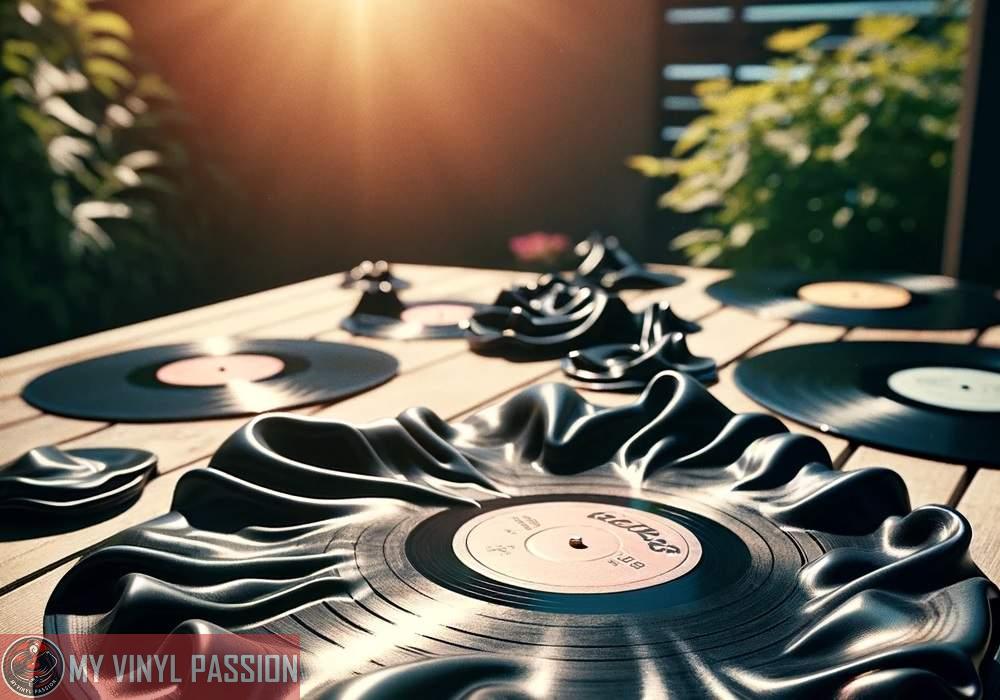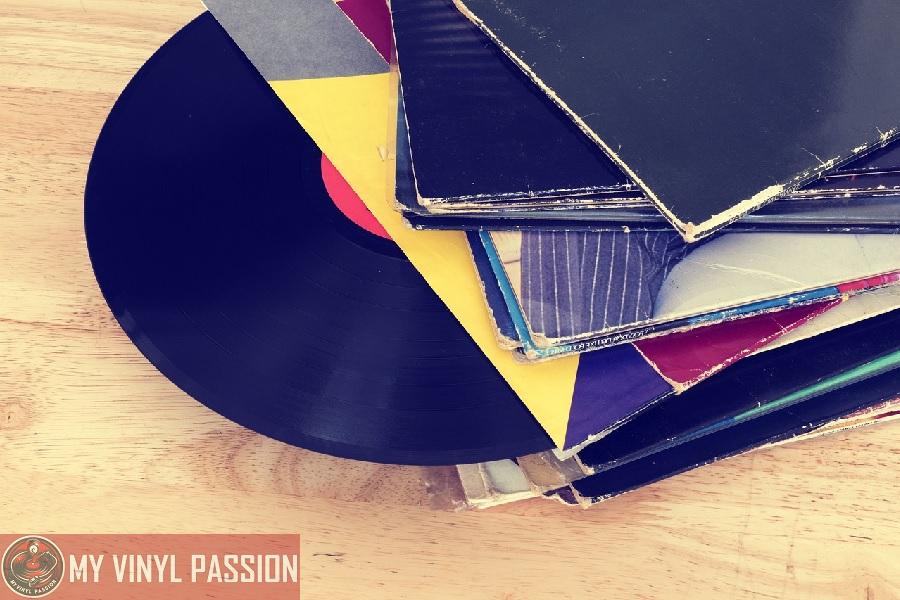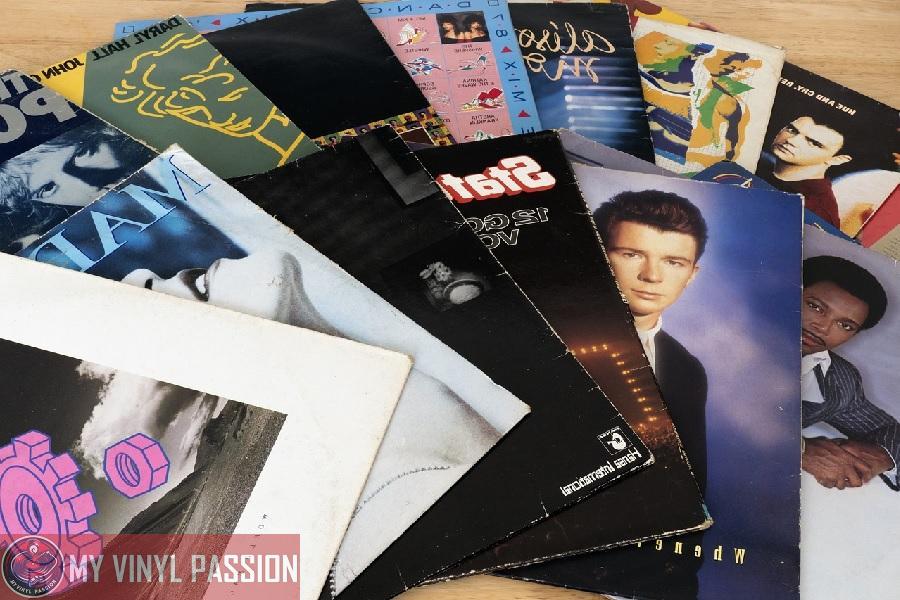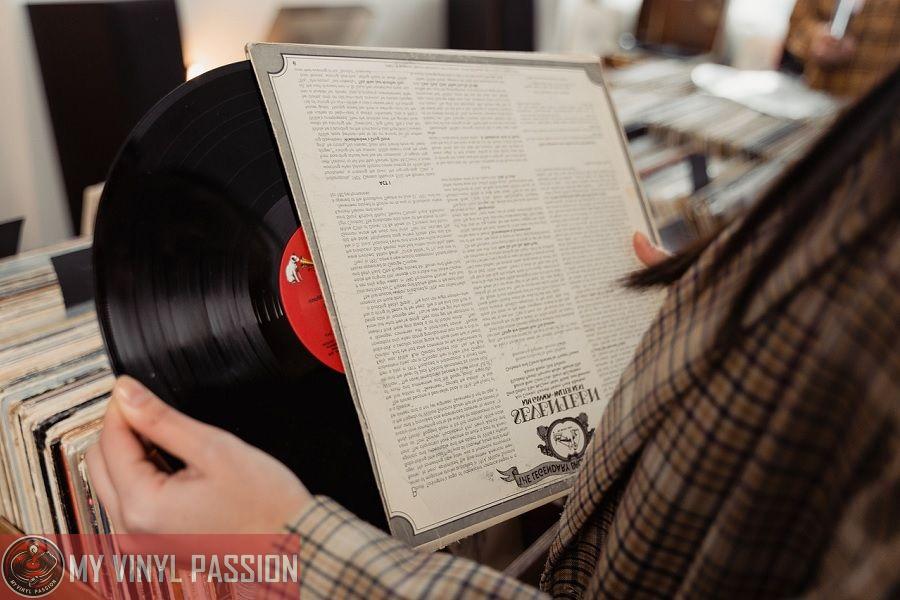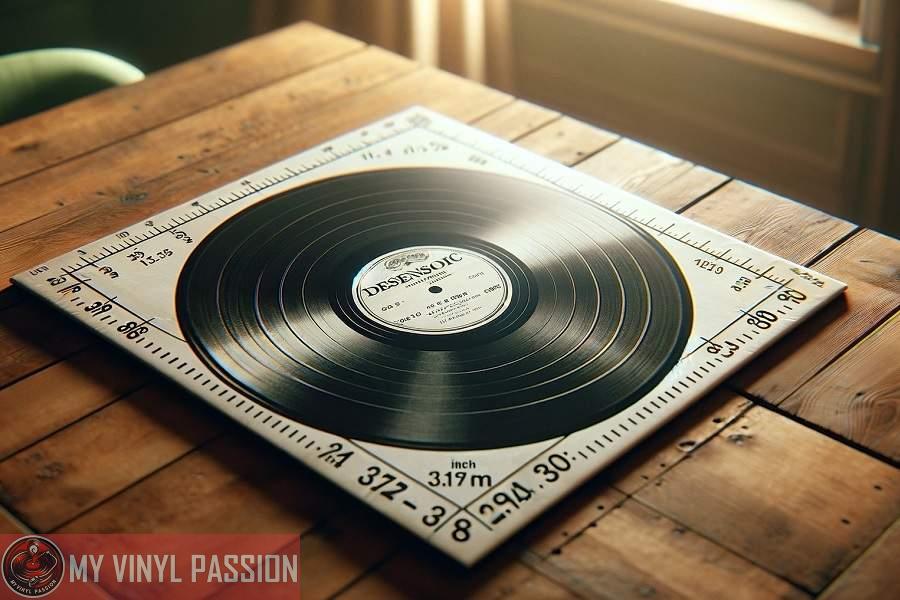Vinyl records have been a beloved medium for music enthusiasts for decades, and their recent resurgence in popularity proves that they have a special place in the hearts of many.
With vinyl records, there’s a warmth and depth to the music that just can’t be replicated by digital formats.
These precious music artifacts are also sensitive to temperature and environmental conditions, especially heat.
Exposure to high temperatures can cause warping and even melting of vinyl records, damaging their playback quality and potentially rendering them unplayable. Furthermore, direct sunlight and fluctuating temperatures can also affect the grooves and overall integrity of the records.
Therefore, it’s crucial to understand how heat impacts vinyl records and learn the best practices for storing and preserving these cherished items in moderate conditions to ensure their longevity.
In Summary
Heat can warp or melt vinyl records, affecting playback quality
Direct sunlight and temperature fluctuations impact the integrity of records
Proper storage and preservation in moderate conditions are essential for longevity
Understanding Vinyl Records
Vinyl records are delicate treasures made from polyvinyl chloride (PVC), which is a thermoplastic material that becomes soft in high temperatures. Knowing how heat affects your vinyl records can help you preserve their quality and playability.
The grooves in a vinyl record carry the sound information. Precision is vital; even a tiny change in shape can affect the audio playback. Unfortunately, vinyl material is sensitive to heat, which can damage these grooves. Here’s a brief explanation of the core aspects of vinyl records.
- Vinyl Material: As mentioned earlier, vinyl records are made from PVC, a type of plastic. On a molecular level, the PVC chains are interspersed with carbon and chlorine atoms, which are responsible for the stability of both the sound and the record itself.
- Grooves: The grooves in a vinyl record are an important component, as they store the audio information. A turntable needle navigates these microscopic grooves, which in turn vibrate and produce sound through the speaker system. If the grooves are damaged, the sound quality suffers.
Heat exposure can cause noticeable damage to vinyl records in various ways. Some effects of heat on vinyl records include:
- Warping: When exposed to high temperatures, the PVC material of the vinyl records softens, making them susceptible to warping and losing their original shape. This can lead to skipping or uneven playback.
- Groove Damage: As mentioned earlier, the grooves are critical for sound quality. When PVC softens due to heat, the grooves may distort or melt, causing irreversible damage to the sound quality and the playback experience.
- Record Sleeve Damage: Excessive heat may also damage the record sleeves, leading to discoloration, peeling, and stickiness that can affect the record’s appearance and longevity.
- Delamination: In some cases, high heat can cause the layers of the vinyl record to separate, resulting in a phenomenon called delamination.
To keep your vinyl records in optimal condition, store them in a cool, dry, and dark place away from direct sunlight and heat sources. Ensure they are stored vertically to prevent warping, and use acid-free sleeves to protect them from dust and damage.
Effects of Heat on Vinyl Records
Heat can have several detrimental effects on your vinyl records. It’s essential to protect them from excessive heat and temperature fluctuations to maintain their quality. In this section, we’ll discuss the impact of heat on vinyl records, including warping, melting, distortion, and brittleness.
Warping
When exposed to excessive heat, the grooves in your vinyl records may become distorted, causing the records to warp. This can lead to issues with playback as the stylus struggles to track the distorted grooves properly. Warping of your vinyl record can be caused by:
- Direct sunlight
- Extremely hot environments
- Improper storage
To prevent warping, it is important to store your records in a cool, dry place away from direct sunlight and heat sources.
Melting and Breaking
The melting point of vinyl records is around 140 degrees Fahrenheit (60 degrees Celsius). When your records are exposed to temperatures close to or exceeding this point, they risk melting or becoming highly susceptible to warping and distortion.
Additionally, excessive heat can make the vinyl more brittle, increasing the risk of breaking.
Heat Damage During Shipping
When shipping vinyl records, it’s crucial to protect them from heat damage. One way to do this is by using bubble wrap, which provides insulation against temperature fluctuations. Be sure to package your records securely with ample padding to minimize any potential damage during transit.
In summary, heat can have several negative effects on your vinyl records, including warping, distortion, increased brittleness, and potential breakage.
To maintain the quality of your collection, it’s important to store and ship your records with care, taking the necessary precautions to protect them from excessive heat and temperature changes.
Impact of Temperature Fluctuations
Temperature fluctuations can have a significant impact on the longevity and quality of your vinyl records. It’s crucial to maintain a stable temperature to prevent damage caused by extreme heat or cold.
In this section, we explore the effects of temperature changes on vinyl records and discuss the ideal conditions for preserving them.
Understand that vinyl records are made from a plastic material called polyvinyl chloride (PVC), which is sensitive to temperature changes. In a heatwave or direct sunlight, the material can become pliable and warp, leading to distortion in playback.
Moreover, drastic temperature fluctuations can cause the PVC to expand and contract, potentially affecting the record’s grooves and compromising sound quality.
For maintaining your vinyl records in pristine condition, it’s essential to keep them at the ideal temperature. Generally, this is considered to be room temperature (around 65-70°F or 18-21°C). Avoid exposing them to temperatures higher than 85°F (30°C) as it might cause irreversible damage.
Considering the impact of temperature fluctuations on your collection, you may be interested in the following tips for storing vinyl records:
- Store your records vertically, providing enough support to prevent them from leaning.
- Keep your collection away from direct sunlight or heat sources such as radiators, vents, and electronic devices.
- Use protective sleeves or covers to shield the records from dust and potential temperature changes.
By implementing these simple steps, you can protect your vinyl records from the adverse effects of temperature fluctuations and ensure their longevity.
Remember, maintaining a stable temperature and following proper storage practices will contribute to preserving the sound quality and overall integrity of your cherished collection.
Influence of Direct Sunlight and Light
Direct sunlight can have a significant impact on your vinyl records. Prolonged sunlight exposure can lead to warping, fading, and even damage to the grooves. In this section, we will discuss the effects of sunlight and light exposure on vinyl records and how you can protect your cherished collection.
When your vinyl records are exposed to direct sunlight, the heat can cause the vinyl to warp. Warping can affect the audio quality as well as the playback experience, making your records unplayable.
The risks are higher if your records are stored in a place with fluctuating temperatures, such as near a window or in a car.
In addition to warping, sunlight exposure can cause the album artwork to fade. The UV rays in direct sunlight can degrade the colors and images over time. This not only affects the visual appeal of your collection but can also reduce its resale value.
Here are some tips to protect your vinyl records from the effects of sunlight exposure:
- Store them in a cool, dry place: Keep your records away from windows, heat sources, or direct sunlight to avoid temperature fluctuations.
- Use protective outer sleeves: Using a UV-protective outer sleeve can help prevent fading of album artwork due to sunlight exposure.
- Organize your collection vertically: Stacking records horizontally can lead to uneven weight distribution, increasing the risk of warping. Store them vertically to minimize the risk.
- Avoid leaving records in your car: The interior of a car can experience drastic temperature changes, increasing the risk of warping.
Lastly, it’s important to consider the effects of light on your vinyl records, even if it isn’t direct sunlight. Exposure to strong artificial light sources, such as halogen lamps, can also cause warping and fading over time.
Just like with sunlight, it is best to store your records in a location with minimal exposure to artificial light sources.
By taking these precautions, you can protect your vinyl records from the damaging effects of sunlight and light exposure, ensuring that they remain in excellent condition for years to come.
Appropriate Storage for Vinyl Records
When it comes to maintaining the longevity and quality of your vinyl records, proper storage is of the utmost importance. It’s essential to keep your records in a suitable environment that protects them from heat and humidity.
Poor storage conditions can lead to warped records, mold growth, and a loss of sound quality.
First and foremost, you should find a cool, dry place for your vinyl record collection, preferably indoors. Avoid storing your records in a garage, as heat and fluctuating humidity levels can cause damage.
Keep your records away from direct sunlight, radiators, and other heat sources to prevent warping. Ideal storage conditions are around 65°F (18°C) and a humidity level between 45% and 50%.
Proper shelving is also crucial for the protection of your vinyl records. Ensure your shelving is sturdy and can support the weight of your collection. When placing your records on the shelf, use cardboard spacers to provide extra support and prevent overcrowding.
Store your records in an upright position, maintaining their flat shape, and avoid stacking them horizontally, as this can lead to warping and ring wear on the album covers.
You can further protect your records by using the right sleeves and jacket materials. The first line of defense is the inner sleeve, which houses the vinyl record itself. It’s recommended to use a combination of paper and plastic materials for the inner sleeves.
Opt for paper-lined, non PVC-based plastic sleeves to minimize chances of mold growth. You can also place a high-quality plastic outer sleeve around the album jacket to provide additional protection from dust and humidity.
In addition to using proper sleeves and jackets, it’s important to handle your vinyl records with care. Always touch the edges and label areas of the record, and avoid touching the grooved playing surface to prevent dirt and oil buildup.
By following these storage and handling tips, you can maintain the quality of your vinyl records and enjoy them for years to come.
Avoiding Heat-Related Damage to Vinyl Records
To protect the quality of your vinyl records, it is crucial to understand how to handle, store, and safeguard them. Heat is a significant factor that can lead to irreversible damage, so taking proper care is essential. Here are some tips to ensure your records remain in high-quality condition.
First, keep your records away from direct heat sources. Avoid placing them next to radiators, vents, or in direct sunlight.
Not only can this cause the vinyl to warp and lose audio quality, but it can also lead to fading or discoloration of the cover art. Instead, store your records in a cool, dry place away from heat sources.
- Direct heat sources: Radiators, vents, sunlight
- Indirect heat sources: Lamps, electronics (TVs, computers, etc.)
When it comes to stacking your records, proper care is necessary to avoid flattening or damage. Do not stack them horizontally, as this can cause increased pressure on the records at the bottom, leading to warping or even breaking. Instead, store them vertically with enough space between each record to prevent bending or scratching.
- Incorrect: Horizontal stacking
- Correct: Vertical stacking with space between records
To further safeguard your vinyl collection, invest in protective sleeves or high-quality covers. These will not only preserve the cover art but also lessen the risk of scratches or other damage while handling the records.
Additionally, consider using acid-free inner sleeves that will minimize the interaction between the vinyl and its packaging.
- Protection options: Plastic outer sleeves, acid-free inner sleeves, high-quality covers
Finally, be mindful of your surroundings. If you have air vents or windows that allow sunlight into the room where you store your records, reposition your collection to a more protected area. If needed, consider investing in blinds or curtains to block out direct sunlight.
By following these guidelines and giving proper care to your vinyl records, you can successfully avoid heat-related damage, preserving their quality and value for years to come.
Remember, it’s all about protecting them from heat sources, handling them gently, and providing the necessary protection to ensure their longevity.
Relation of Playback Quality and Heat Exposure
When it comes to heat exposure, vinyl records are quite sensitive. It’s important to understand the impact of high temperatures on the playback quality of your precious records. In this section, we will discuss how heat can affect the sound quality, stylus performance, and potential playback issues of vinyl records.
Heat exposure may cause warps in the vinyl material, which can ultimately impact the sound quality of your record.
A uniformly flat record ensures that the stylus maintains consistent contact with the grooves. With warped records, the stylus might lose contact or skip sections of the grooves, resulting in playback issues such as:
- Distortion
- Changes in pitch
- Hissing or crackling sounds
When it comes to the stylus, the overall performance may also be influenced by elevated temperatures. High temperatures could potentially lead to the softening or even melting of the stylus tip, causing it to lose its ability to properly trace the grooves.
This, in turn, may degrade the sound quality of the record. Additionally, an overheated stylus can damage the grooves over time, which can turn a simple playback issue into a permanent problem.
To protect your vinyl collection from heat-related quality issues, consider implementing the following precautions:
- Store records in a cool, dry environment
- Avoid direct sunlight or proximity to heat sources
- Keep the playback equipment away from windows or other heat sources
- Regularly check your stylus for signs of wear or damage
By being aware of the potential risks heat exposure poses to your vinyl records, you can preserve their sound quality and longevity, ensuring that you continue to enjoy their audio excellence.
Preservation of Vinyl Records in Moderate Conditions
When it comes to preserving your cherished vinyl collection, moderate conditions play a crucial role in maintaining its longevity. To enhance the lifespan of your collection, it is essential to keep an eye on humidity levels, temperature, and proper storage practices.
Humidity Control: Since moisture poses a significant threat to your vinyl records, it is vital to maintain an optimal humidity level. A hygrometer can help you monitor the humidity in your storage space. Aim for a level between 40-50% relative humidity. A dehumidifier can effectively reduce excess moisture, while an air conditioner can also help maintain a stable environment.
Temperature Regulation: Achieving the right temperature is another key factor to preserve your vinyl records. Generally, maintaining a temperature between 65-70°F (18-21°C) is considered optimal for storage. To keep the temperature stable, consider using a cooler or other cooling devices, especially during warmer months.
Transportation Tips: In case you need to transport your vinyl collection, some precautions are necessary to avoid heat damage:
- Avoid direct sunlight: Keep your records away from direct sunlight during transportation, as it can cause warping.
- Use insulated containers: Opt for dedicated vinyl record transportation containers, as they provide insulation against heat.
- Ventilate your car: Ensure your car is well-ventilated and not overly hot before placing your collection inside.
Turntable Care: Preserve the quality of your turntable along with your collection by regularly cleaning it and adhering to optimum usage practices. Proper storage, calibration, and maintenance of your turntable contribute significantly to the longevity of your vinyl records.
By employing these strategies, you can maintain your vinyl records in moderate conditions and keep your cherished collection intact for years to come.
Frequently Asked Questions
How long can vinyls stay in a hot car?
It’s best to avoid leaving your vinyl records in a hot car for an extended period. Even a few hours in a hot car can cause damage, such as warping or melting. Always try to bring your vinyls inside or store them in a cool, dry area.
What temperature causes vinyl warping?
Vinyl records may warp at temperatures above 100°F (38°C). However, even temperatures around 86°F (30°C), combined with high humidity, can cause warping over time. To prevent damage, store your vinyl records in a cool environment with steady temperatures below 75°F (24°C).
Can sunlight damage vinyl records?
Yes, direct sunlight can indeed damage vinyl records. Extended exposure to sunlight can cause warping, fading of the album art, and deterioration of sound quality. It’s essential to store your records away from direct sunlight and heat sources.
Are attics safe for vinyl storage?
Attics can be safe for vinyl storage if they maintain a stable temperature and humidity level. However, many attics experience significant temperature fluctuations, which can harm your records. Ensure your attic maintains a consistent temperature below 75°F (24°C) and a humidity level between 30-50% for safe storage.
How does heat affect vinyl sound quality?
Heat can cause records to warp, leading to poor sound quality or tracks becoming unplayable. A warped record may have inconsistent sound levels, skips, or repeating sections. Always store your vinyl records in a temperature-controlled environment to preserve their sound quality and longevity.
What’s the best way to prevent heat damage to records?
The best way to prevent heat damage is by storing your vinyl records in a cool, dry environment with a consistent temperature below 75°F (24°C) and humidity level between 30-50%. Keep them away from direct sunlight, heat sources, and damp conditions. Also, store your records vertically and avoid stacking them horizontally, which can cause warping under the weight. Following these guidelines will help ensure your records stay in good condition.
